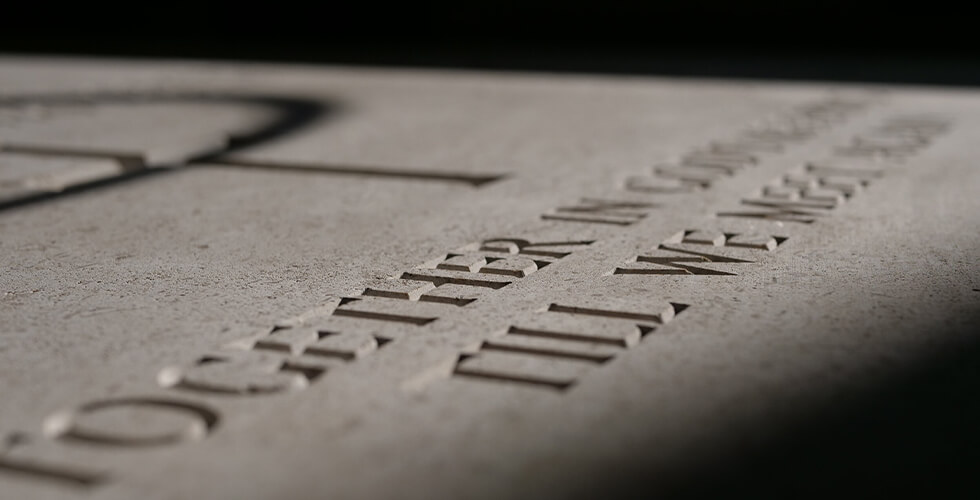24 June 2022
Visit Commonwealth War Graves in Malta
From the Punic Wars between Rome and Carthage, the Arab and Norman conquests and the Knights of Malta, through to Napoleon and the British Empire, the history of Malta has been entwined with stories of battle and conquest.
This was no different during the world wars, with the small island in the Mediterranean playing two very different, but very important, roles in each conflict. Today, Commonwealth war graves in Malta pay tribute to the men and women who lost their lives there. Read on to discover their stories.

Why are there Commonwealth war graves in Malta?
Despite its small size, Malta’s war history is a tale of endurance, bravery, and sacrifice, both from the forces stationed there and the civilians caught up in the war.
Malta in World War One
In both world wars, Malta’s position in the Mediterranean made it an important strategic location. During World War One, it was well positioned to receive casualties from the ill-fated invasion of Gallipoli in 1915.
The invasion begun on 25 April 1915, with the initial intention that the wounded would be treated at British facilities in Egypt. However, the high number of casualties during the landings meant that Malta was pressed into action, with the call for an initial 1,000 beds received on 29 April.
In total, 28 hospitals and convalescence camps were operational in Malta during the war, including Malta’s three pre-existing hospitals and Mtarfa Military Barracks, which was given over to medical use. Between them, these sites held more than 26,000 beds, and treated more than 135,000 sick and wounded throughout the duration of the war, earning Malta the nickname ‘the nurse of the Mediterranean’.

Malta also contributed to the war effort in other theatres of war. The King’s Own Malta Regiment of Militia garrisoned the island, manning Malta’s coastal defences as well as sending units to garrison Cyprus in early 1915, as well as Gallipoli in late 1915. The Maltese Labour Corps raised multiple battalions during the war to support the British Army, serving as labourers, cooks, waiters, miners, and a host of other logistical tasks across the Eastern Mediterranean.
Malta in World War Two
The island of Malta was at the heart of the struggle between Allied and Axis powers for control of the Mediterranean. Between 1940 and 1942 it was subjected to some of the heaviest sustained bombing attacks of the entire war, known as the Siege of Malta.
Malta played a key part in the Second World War due to its enormous allied strategic importance in the centre of Mediterranean. In September 1939, Malta was part of the British Commonwealth. It was vital to the Allies, as the only British-held harbour between Gibraltar and Alexandria and as a base for air and submarine operations against Axis convoys supplying North Africa.
German and Italian forces attempted to starve Malta's military and civilian population of essential supplies. The island's three airfields were repeatedly targeted, and more than 1,500 civilians were killed in the bombing. By the early summer of 1941, the situation was critical. Many ships laden with supplies for the island were sunk before they could reach Malta’s principal harbour of Valletta. Stocks of food, fuel and anti-aircraft ammunition were very low.
In March and April 1942, Axis air forces dropped more bombs on the island than had fallen on London during the Blitz. On the night of 9 August, the largest relief convoy yet left Gibraltar, codenamed Operation Pedestal. Under almost constant attack by sea and air, only five of the convoy's 14 Merchant vessels made it to Valletta. The last to arrive was the severely damaged oil tanker SS Ohio, which entered the Grand Harbour on 15 August. Five of the convoy’s warships, including the aircraft carrier HMS Eagle, were also lost.

Despite the losses the convoy landed 55,000 tons of desperately needed supplies. Having been on the verge of collapse and capitulation Malta now had enough supplies to carry on resisting as a new wave of air raids continued into the autumn. The threat to Malta finally diminished after the defeats suffered by the Axis powers in North Africa in late 1942.
In honour of the people of Malta’s bravery and sacrifices, the island was awarded the George Cross on 15 April 1942, with the King’s citation: “To honour her brave people I award the George Cross to the Island Fortress of Malta to bear witness to a heroism and devotion that will long be famous in history”.
Where are Malta’s war cemeteries?
Our dedicated team cares for 15 CWGC sites on the Republic of Malta’s largest island, Malta. Many of them are based around the island’s capital Valletta whose twin harbours were key targets during the siege of Malta.
Our largest site away from the capital is Imtarfa Military Cemetery on the west of the island, with 254 world war graves, plus an additional 1,200 non-war graves in our care.
Due to Malta’s shallow soil, many of the graves we maintain on the island are joint or collective burials continuing more than one individual cut into the underlying rock. These graves are marked by recumbent markers (flat markers) on which the names and details of multiple casualties can be listed. For the same reason, single graves are also marked this way.
How many war graves are there in Malta?
Almost 6,000 Commonwealth servicemen and women lie buried in Malta's CWGC war graves or commemorated by name on memorials to the missing. The Commission also cares for more than 200 war graves of other nationalities in Malta. Almost 4,000 non-war burials, mostly those of servicemen, their dependents and civilian workers attached to military establishments are also cared for by the CWGC.
First World War graves, Malta
As the ‘nurse of the Mediterranean’, most of the war graves in Malta from World War One are those who were injured in other theatres and evacuated to Malta. Others died in the influenza epidemic that struck at the end of the war. There are now close to 2,000 Commonwealth war dead commemorated here.
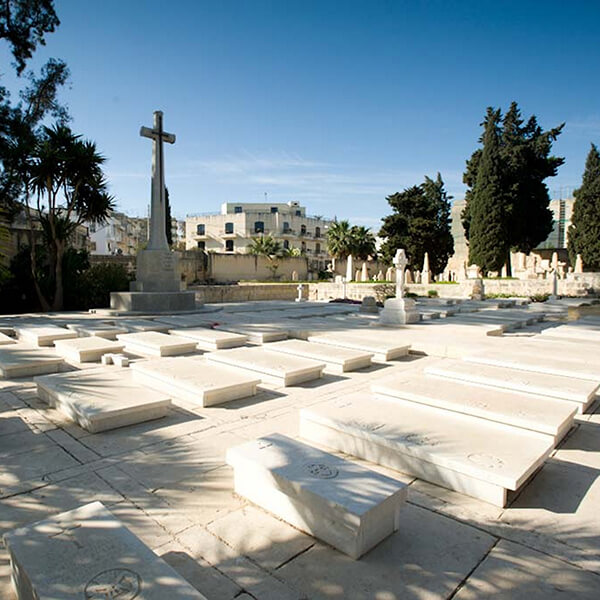
Pieta Military Cemetery
More than 1,300 Commonwealth casualties buried at Pieta Military Cemetery are casualties of World War One, making it the largest number of WW1 graves on the island.
882 of the burials here, nearly 60% of the total number of casualties, died in 1915 having been wounded or contracted sickness at Gallipoli and evacuated to Malta. As well as a large number of British war dead, we care for a large ANZAC contingent at Pieta, with more than 230 burials of New Zealand and Australian casualties. There are also 28 Indian casualties commemorated here, including 20 who were cremated at Lazaretto Cemetery in accordance with their faith, and a single Canadian and one Newfoundland burial. There are a further 180, predominantly British, burials of World War Two at Pieta.
Included among the burials are some of the medical staff who worked tirelessly to help those now buried around them. One such example is Doctor Isobel Addey Tate, who qualified as a Doctor in 1902 at a time when it was incredibly unusual to find women doctors. During the war, Isobel joined the Serbian Relief Fund in Serbia before being evacuated to Britain due to illness. After a spell working in Britain, Isobel volunteered for the Royal Army Medical Corps and was posted to Malta, where she died in January 1917.
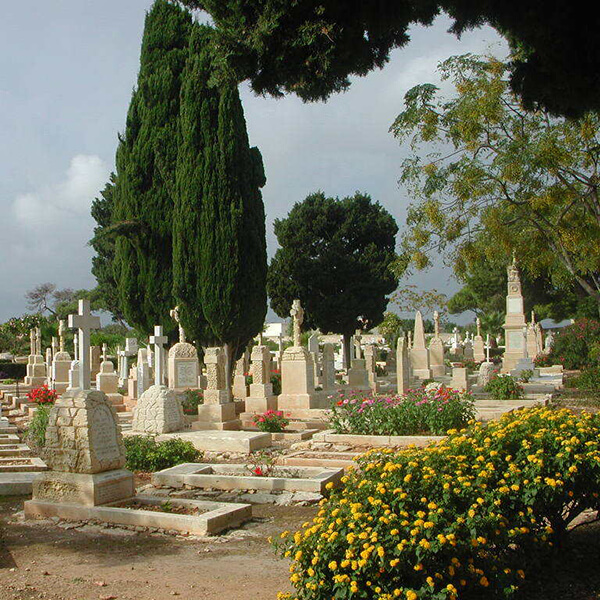
Malta (Capuccini) Naval Cemetery
As the name suggests, Capuccini Naval Cemetery contains mostly naval burials of the two world wars. Initially owned by the Admiralty, Capuccini was formed in 1901 and now contains more than 2,600 burials.
Close to 500 World War One burials are found here, predominantly small numbers of sailors from a range of ships operating in the Mediterranean. 21 casualties came from the HMS Russell which struck a mine on 6 November 1915 and sank off the coast of Malta with the loss of 27 officers and 98 ratings.
There are 43 men of HMS Egmont who died during World War One. Unlike HMS Russell, these men did not die at sea, but on Malta itself at Fort St. Angelo which stands in Valletta’s Grand Harbour. Under the control of the Royal Navy during the war, the fort was commissioned as a ‘stone frigate’ under the name HMS Egmont.
Second World War graves, Malta
Close to 4,000 men and women of World War Two are commemorated on our Malta memorials or buried in a Malta war cemetery.
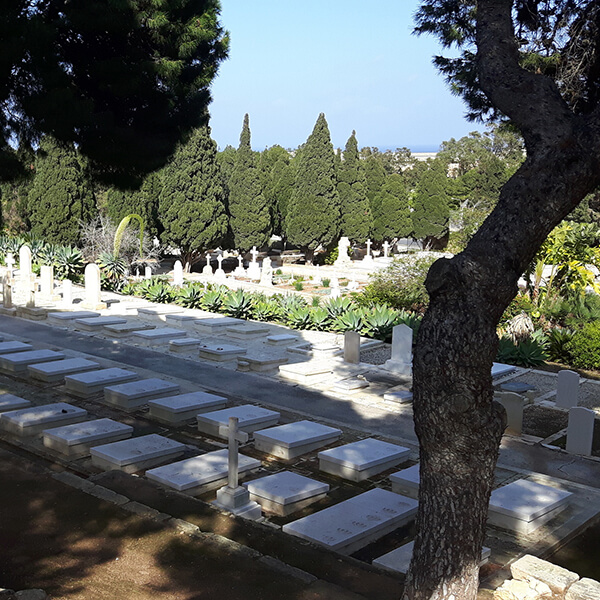
Pembroke Military Cemetery
Pembroke has a strong British Military tradition dating back to the 19th century, with a collection of barracks and forts built to protect the vital Maltese ports from a naval attack.
Pembroke’s military association continued throughout both world wars. In World War One, Pembroke was home to military hospitals where those injured in the Salonika and Gallipoli campaigns were brought for treatment.
During the Siege of Malta in World War Two, Pembroke was again used as a medical centre and was home to 39 General Hospital of the Royal Army Medical Corps. The barracks there were also used to house the families of the men serving in Malta throughout the siege, its position thought to be far enough away from Valletta to be safe from attack, although Pembroke did receive its fair share of attacks throughout the battle.
In the latter stages of the war, Pembroke was home to a large prisoner of war camp with as many as 2,500 German and Italian prisoners from the Italian campaign interred there. Many of the prisoners were of a Roman Catholic faith and built a small chapel while in captivity. Around 200 prisoners that died in captivity were buried at Pembroke until April 1960, when their remains were repatriated.
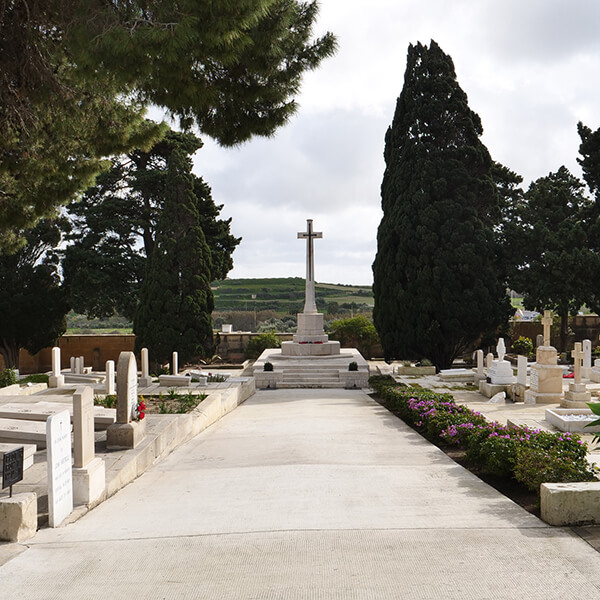
Imtarfa Military Cemetery
At Imtarfa Military Cemetery we care for nearly 1500 burials, more than 230 are World War Two graves alongside 15 World War One burials.
During the war, Imtarfa was home to the No. 90 British General Hospital, which was established in 1941 as a war hospital, having already been under the purview of the Royal Army Medical Corps. At the height of the siege of Malta, the hospital was at its maximum capacity, with room for 2000 beds, although many of them were under canvas on a nearby football pitch.
The cemetery contains the burials of six members of Churchill’s delegation to the Yalta Conference. On 1 February 1945, an aeroplane carrying part of the delegation crashed while flying over Lampedusa, Italy, causing the deaths of all four crew and eleven passengers. One of the casualties was Mrs. Patricia Maxwell Sullican, a Foreign Office secretary, who died on what was her 23rd birthday.
Malta war memorials
Like our other World War Two memorials around the world, our memorials in Malta commemorate those who have no known grave.
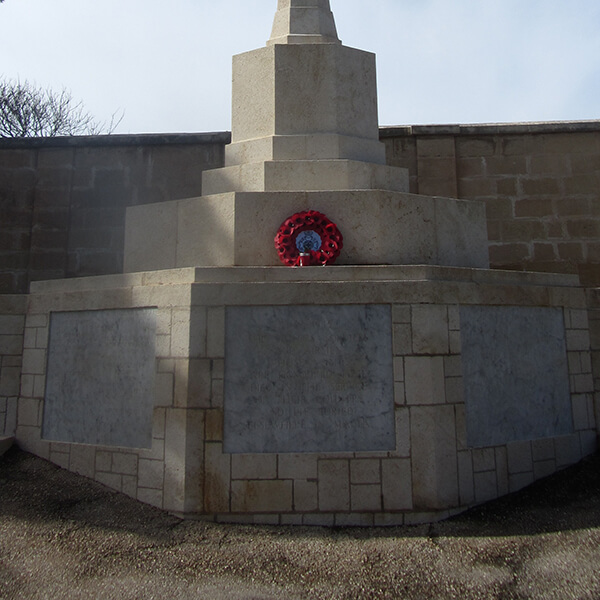
Pembroke Memorial
Pembroke Memorial stands within Pembroke Military Cemetery and commemorates 52 servicemen who are buried elsewhere in Malta, but who’s graves cannot be maintained.
Many of the men commemorated on the memorial are local Maltese who were buried in privately owned family plots and vaults over which the Commission either did not have permission or was unable to erect the usual grave markers. Many of them served as members of anti-air regiments and died in 1941 and 1942, during the siege of Malta. These anti-air regiments were of huge importance to the defence of the island, as the Allies’ limited aircraft on Malta during the early years of the war meant that anti-air batteries were often the first and last line of defence against German and Italian bombing raids on the island.
The memorial also commemorates a handful of Royal Navy and merchant seamen. One example is Petty Officer Joseph Bonnici who had been serving on HMS Ploughboy, a minesweeper that was seriously damaged by a mine on 1 March 1941, killing one crew member and injuring another nine. Bonnici died on 10 March 1941, age 49.

Malta Memorial
Malta Memorial commemorates the aircrew who lost their lives during the air war over the Mediterranean, North and West Africa, and parts of Southern Europe.
Malta was chosen for the location of this memorial due to its pivotal role and connection with the war in the Mediterranean, and a site close to the City Gate entrance to Valletta was donated by the Maltese Government.
The memorial is a 49 foot tall marble column, topped by a gilded bronze golden eagle, itself nearly 8 feet tall. The circular base of the memorial bears bronze panels which bear the names of the men commemorated here.
The bronze plaque on the memorial states that it commemorates those who fell on missions over Malta, Gibraltar, the Adriatic, Tunisia, Sicily, Italy, Yugoslavia and Austria, and ends with the Latin: PROPOSITI INSULA TENAX TENACES VIROS COMMEMORAT, which translates to AN ISLAND RESOLUTE OF PURPOSE REMEMBERS RESOLUTE MEN.
Malta war memorial names
Malta Memorial bears the names of more than 23,000 airmen from around the Commonwealth who died while on combat missions and who have no known grave.
More than 1,500 of the names listed here are from the United Kingdom, but there are also nearly 750 Australian, Canadian, New Zealand and South African airmen commemorated on the memorial.
One of the most famous names on the memorial is Flying Officer Lloyd Trigg of the Royal New Zealand Air Force, who holds the unusual distinction of being awarded the Victoria Cross based solely on testimony of an enemy combatant.
Trigg and his crew were flying in a Liberator off the coast of West Africa when they spotted a German U-Boat. They immediately moved to attack and were badly hit by anti-air fire from the U-Boat. Despite this, they managed to drop six depth charges, damaging the submarine. Trigg made another pass to ensure that the U-Boat was completely destroyed despite the huge damage to his Liberator. The German gunners on the U-Boat could not have asked for a better target and their shots destroyed the plane, killing the entire eight man crew as it crashed into the ocean.
The U-Boat sank 20 minutes later, and although there was no Allied witness to Trigg and his crew’s actions, when the U-Boat captain was later rescued by a nearby Allied ship, he was so effusive in his praise for the pilot’s devotion to duty that Trigg was posthumously awarded the Victoria Cross.
Visit Malta War memorials and cemeteries
You can find out more information about our war cemeteries and memorials in Malta through our website’s site search tool, including visitor information and further details about the casualties we commemorate across the island, or search through the CWGC Archive to find documents from our past related to our sites in Malta.
You can also use our find war dead search tool to find out more about the men and women we commemorate in Malta, as well as their grave registration and headstone details within the records we maintain.
